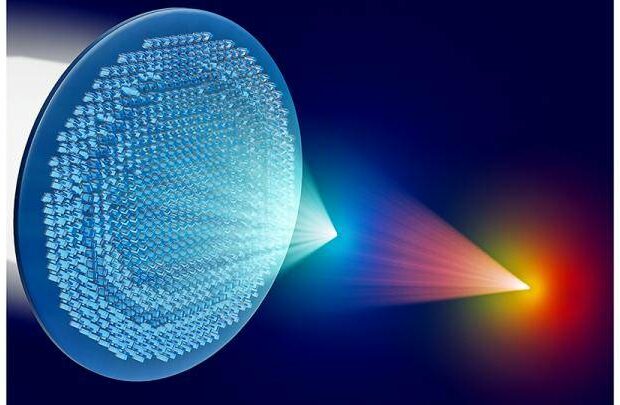With the development of achromatic metalenses, materials scientists have made significant advances in lens technology by combining high numerical aperture, broadband performance, and polarisation insensitivity. This amazing discovery, made possible by Cheng Feng Pan and his Chinese and Singaporean colleagues, may have a significant impact on a number of industries, including quantum technology, bioanalysis, light-field imaging, and medicine. These layered metalenses that are 3D printed provide better optical control and have the ability to completely change how we view the world.
Overcoming Trade-offs Between Bandwidth and Numerical Aperture
Thus far, the search for achromatic metalenses has shown that there is a trade-off between bandwidth and numerical aperture, which limits the usefulness of these materials. Pan and his colleagues, however, put out a novel method for creating multilayer achromatic metalenses with high numerical aperture, bandwidth, and polarisation insensitivity. They used two-photon lithography in conjunction with topology optimisation and complete wavelength simulations to inversely design the metalenses.
Performance of Broadband Imaging
Thus far, the search for achromatic metalenses has shown that there is a trade-off between bandwidth and numerical aperture, which limits the usefulness of these materials. Pan and his colleagues, however, put out a novel method for creating multilayer achromatic metalenses with high numerical aperture, bandwidth, and polarisation insensitivity. They used two-photon lithography in conjunction with topology optimisation and complete wavelength simulations to inversely design the metalenses.
Performance of Broadband Imaging
The study’s findings demonstrated how stacked metasurfaces, which are built from materials with low refractive indices, overcome the drawbacks of single-layer flat optics. By using this method, the group was able to increase the metalenses’ performance into broadband functions without sacrificing their high numerical aperture. The study, which was published in Science Advances, represents a major advancement in the field of metalenses and provides new ideas for the creation of multifunctional broadband optical elements and devices, both in design and production.








